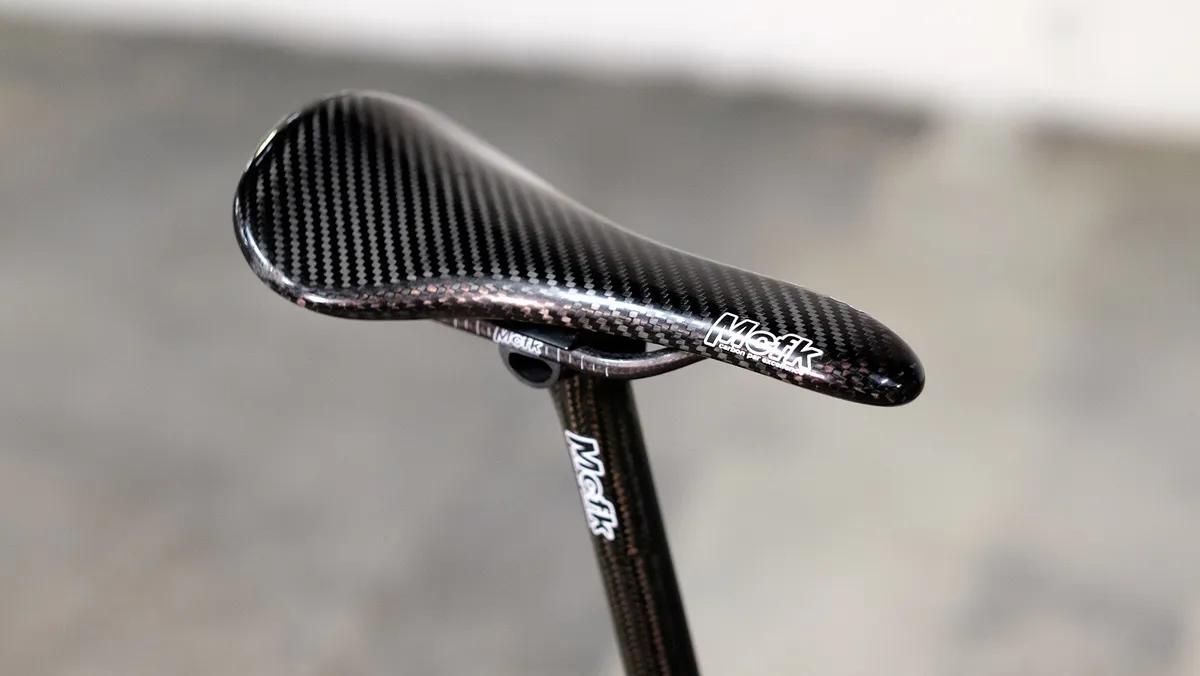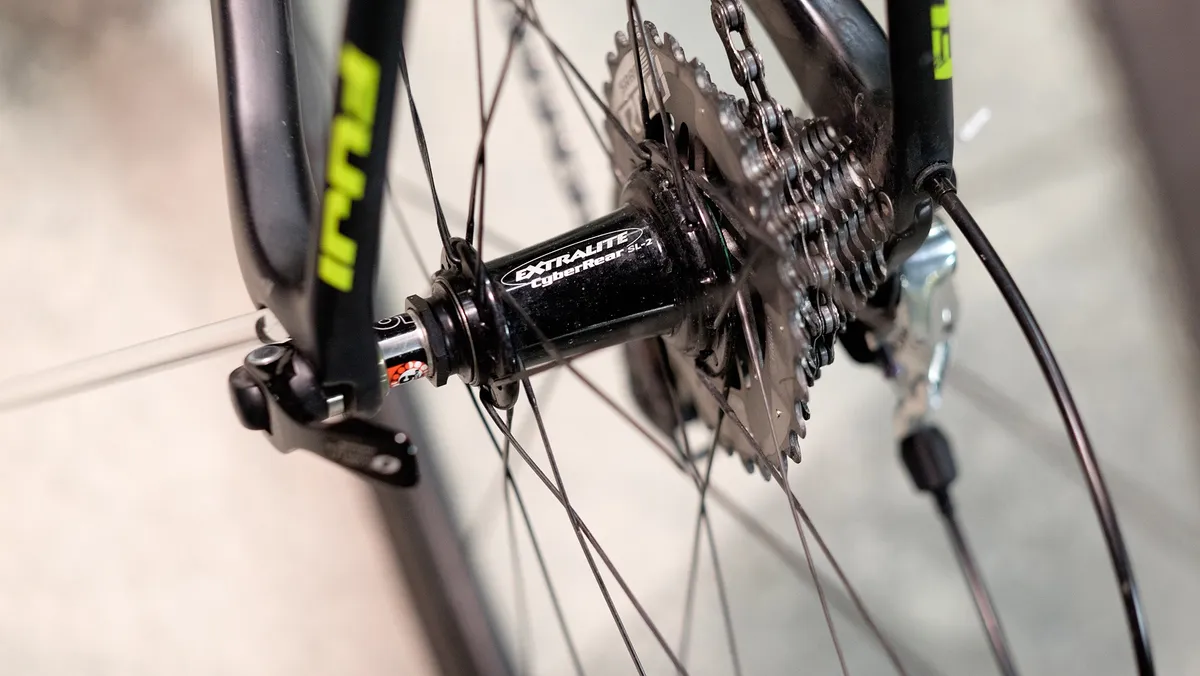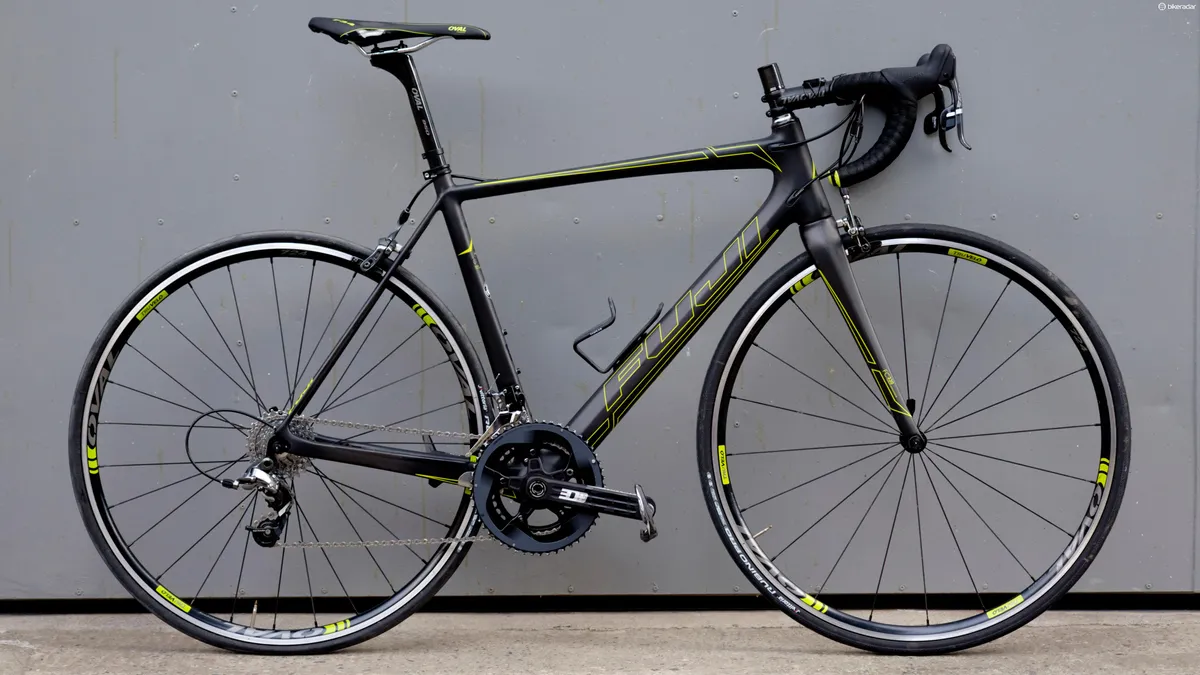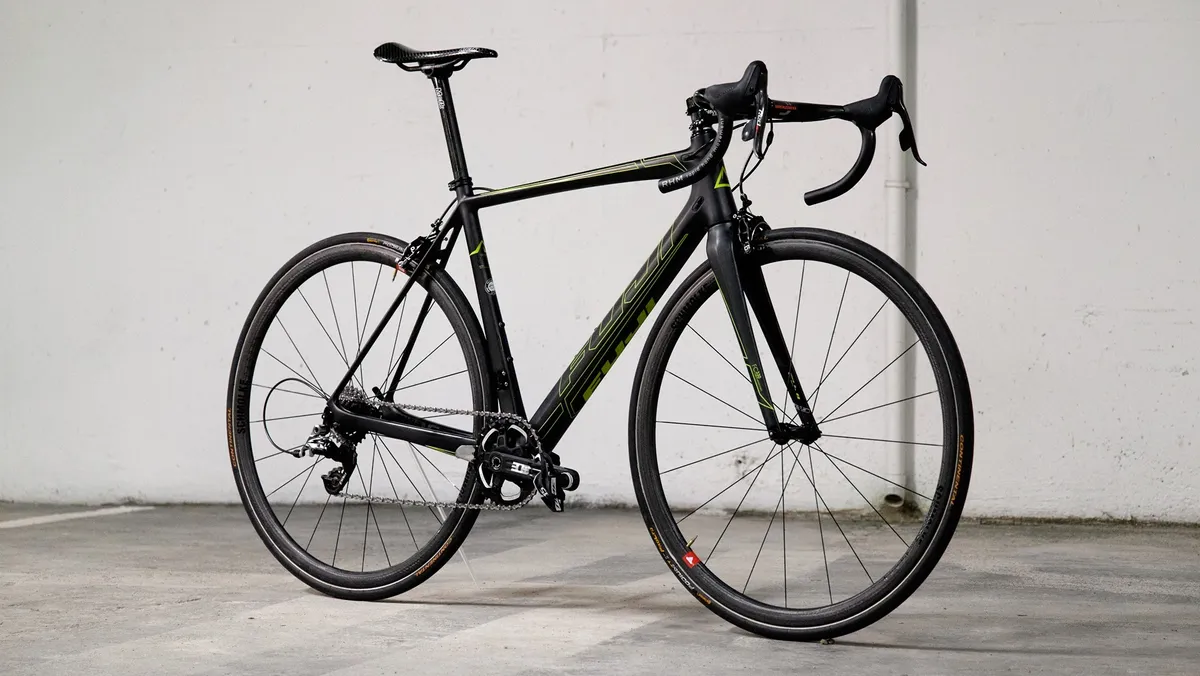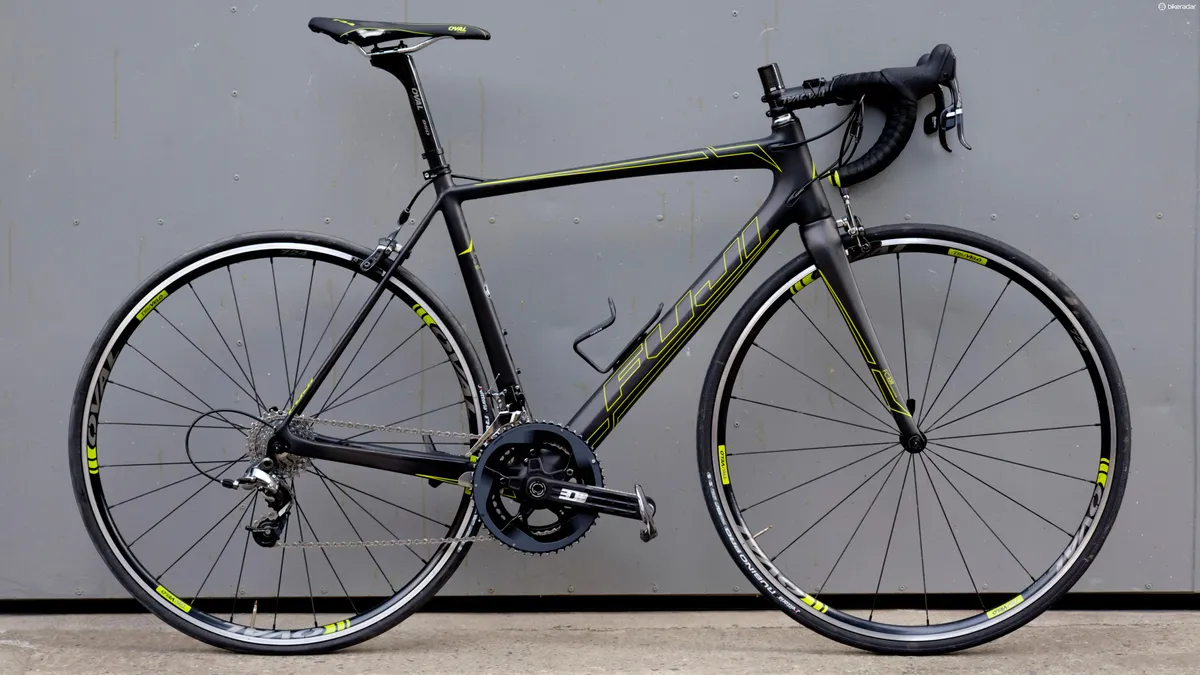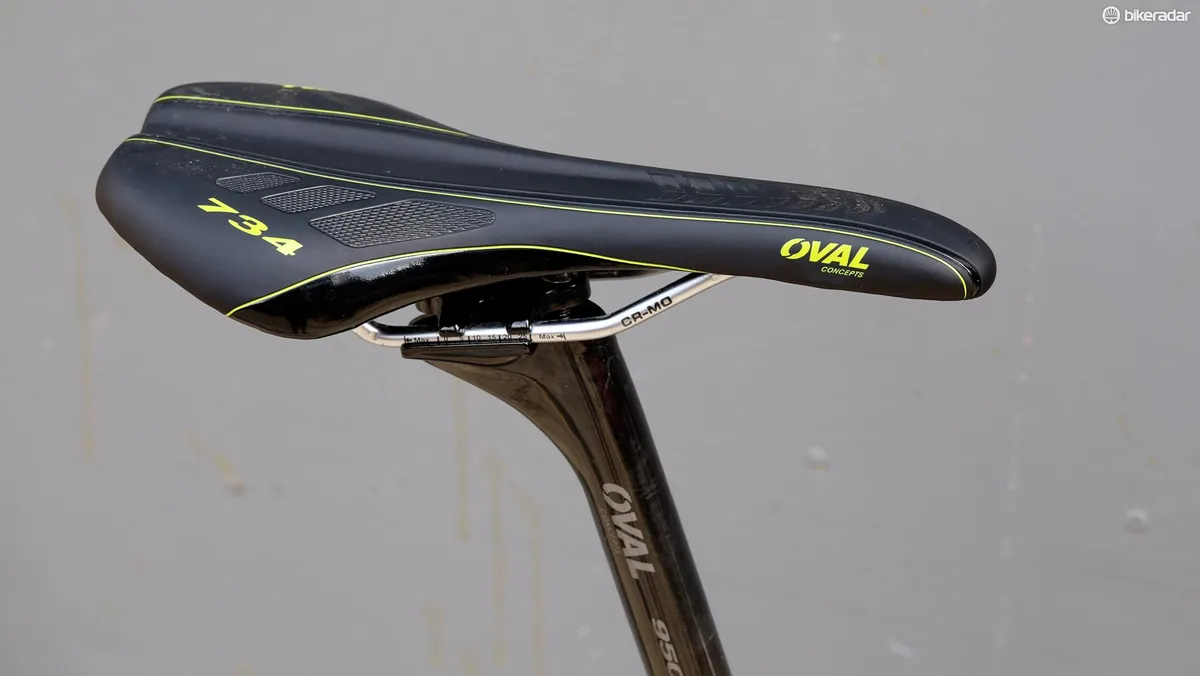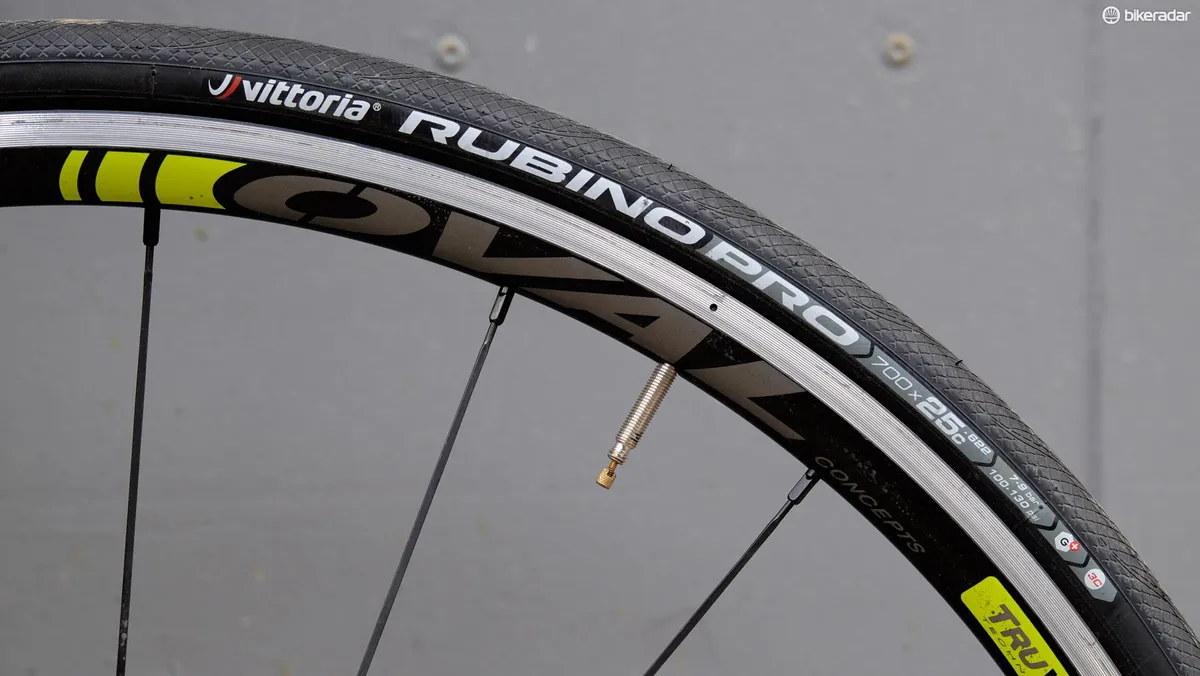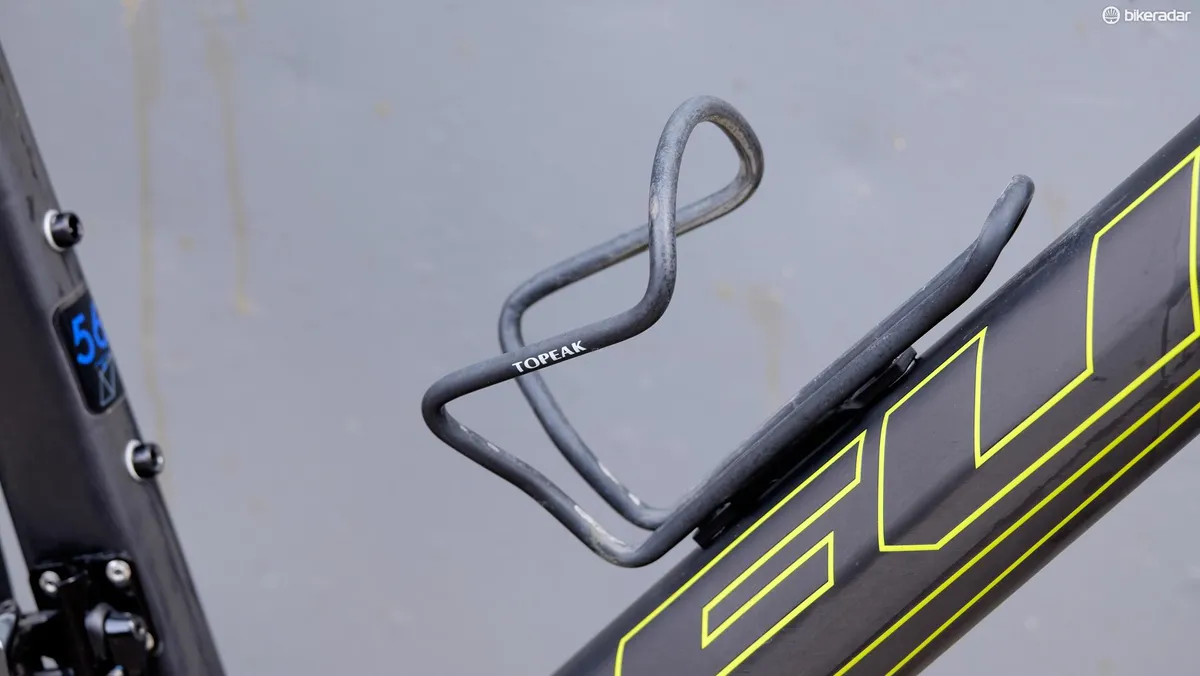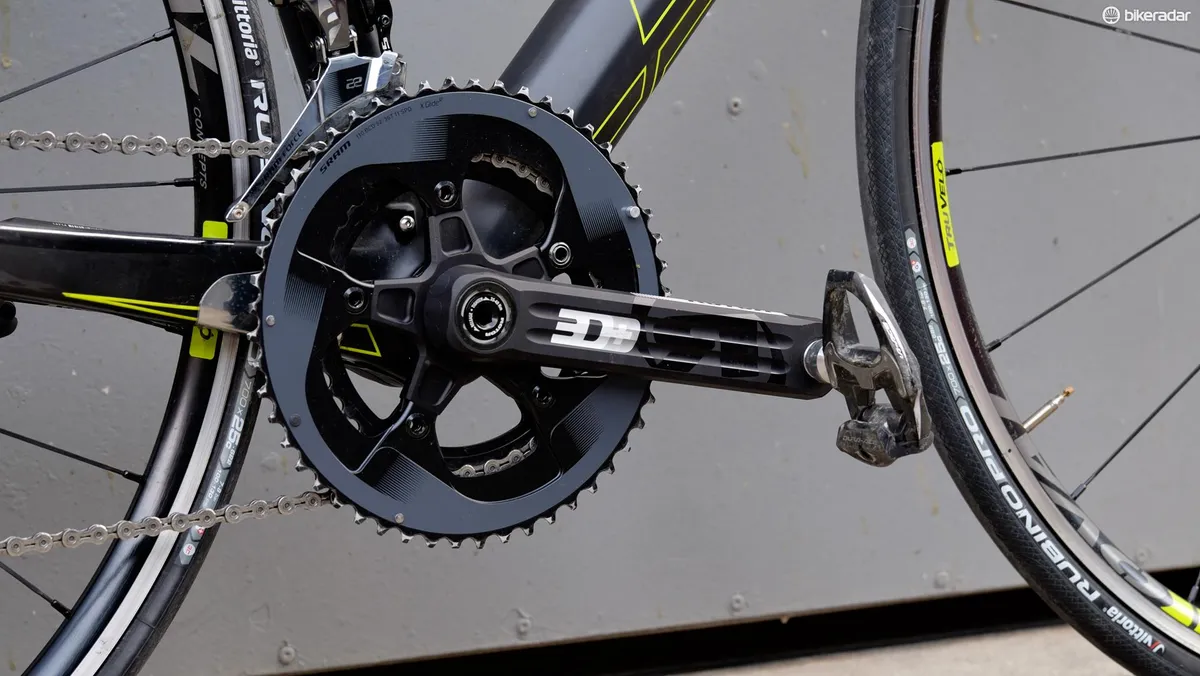If you read my last long-term column, you’ll know that I was well on my way to turning my 7kg Fuji SL 1.5 into a sub 5.5kg weapon for the British hill climb season. It’s been a couple of months since my last update, so did I make it and how did the hill climb season go?
Joe talks us through building his 2017 hill climb bike
Dream wheels and tyres
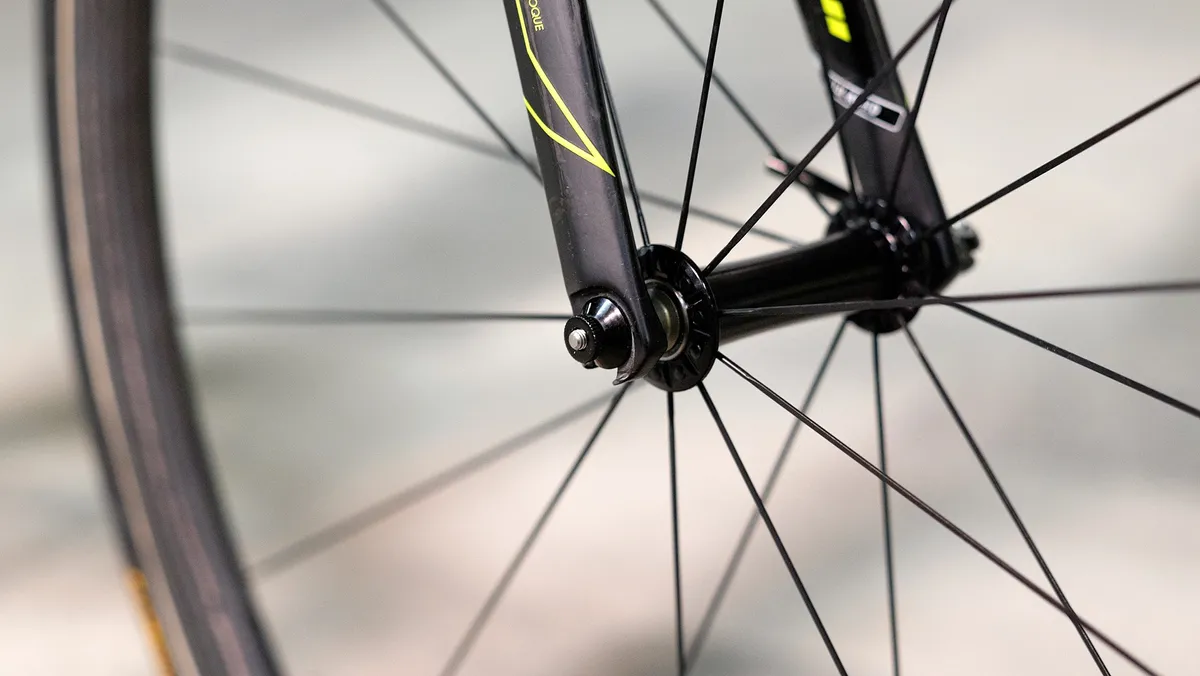
If you want to make a lightweight bike, you’re going to need some incredibly light wheels. I’d been using some Flux hoops, which scored well in a BikeRadar review, and while they were fast, they weren’t super light, meaning it was time for an upgrade.
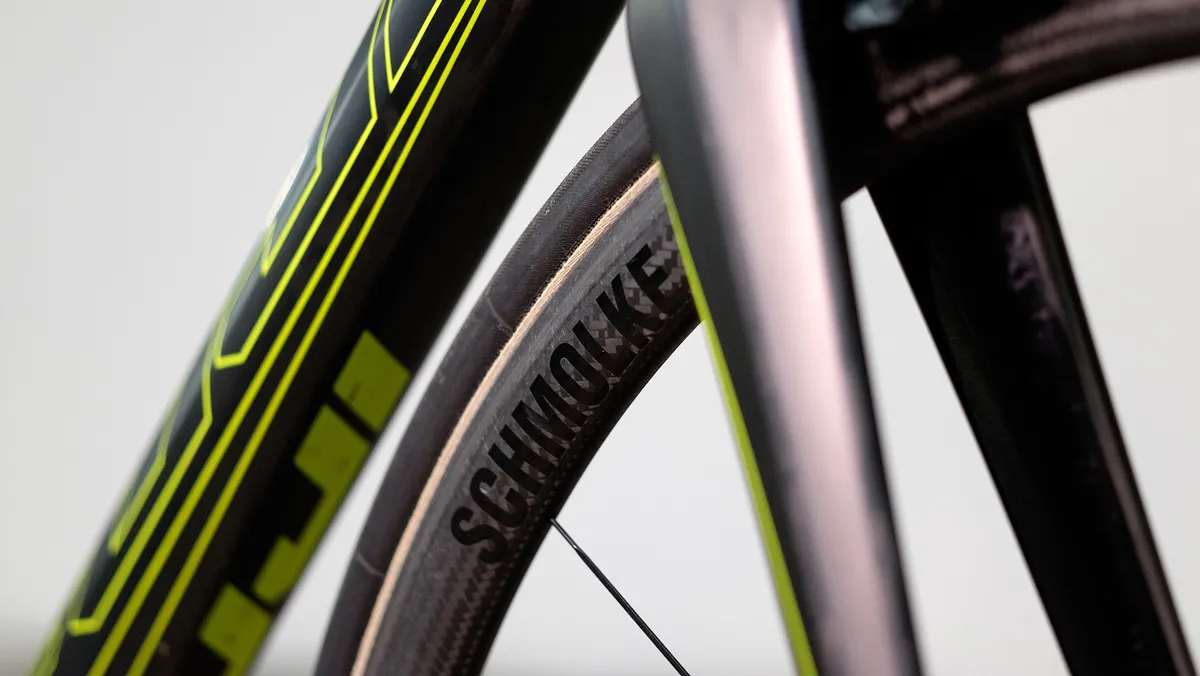
German brand Schmolke was an obvious choice. If you haven’t heard of the brand, it's all about making no-compromise, super lightweight components. Its TLO 30 (the lightest one) tubular wheels weighed in at just 940g for the pair and came with silky smooth Extralite hubs from Italy.
You can go a fair bit lighter than 940g but this often comes at a trade off, mainly in the form of rider weight limits, rim width and stiffness. During the shorter hill climbs I’m often putting down 600+ watts for extended periods, so stiffness is vital and I prefer running wider tyres, so the rims needed a decent width too.
Coming with a 105kg rider weight limit and a relatively wide rim profile of 25.4mm, the TLO’s were perfect for smashing up short sharp hills.
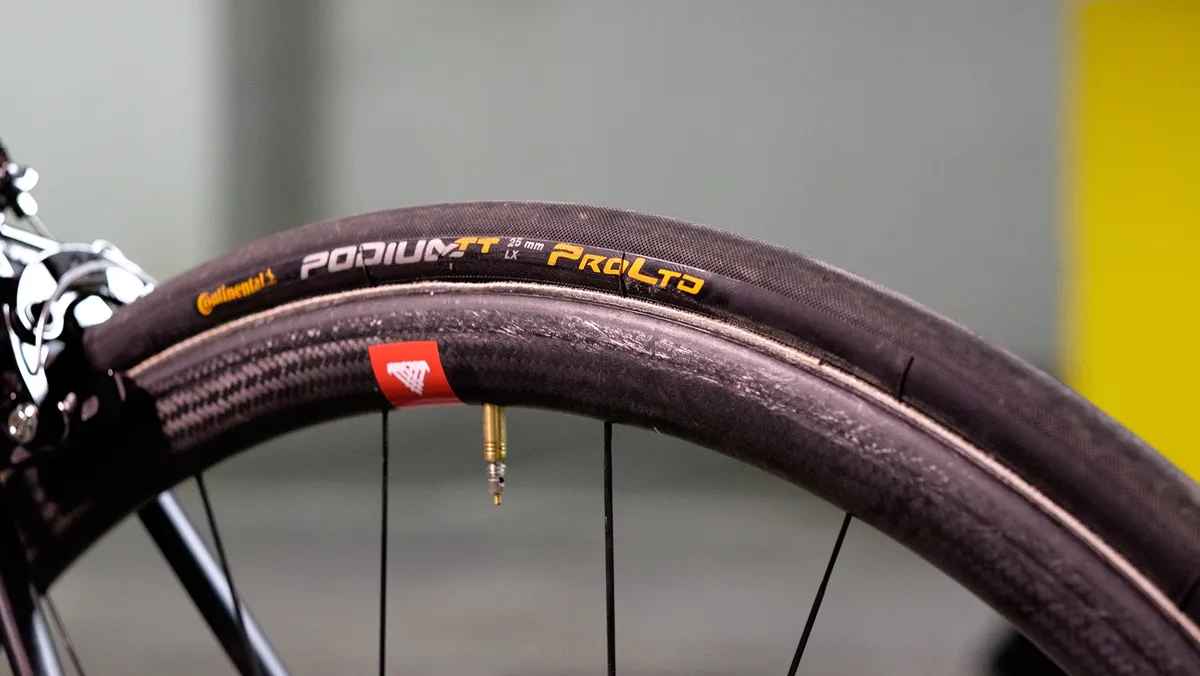
Next up were tyres. Many hill climbers opt for paper thin/narrow tubular track tyres, and while they save some serious grams, you increase your puncture risk. As the old saying goes, if you want to finish first, first you have to finish, so I opted for something a bit tougher and much wider, sourcing some pro only Continental Podium TT tubulars in 25mm width.
The pro only moniker denotes that they come with a latex tube instead of the standard butyl one, making them just a bit lighter. For 25mm tyres they role fast and still provide a degree of puncture protection. When combined with the Schmolke wheels, I saved a whole kilo of weight off the overall build.
Best of the rest
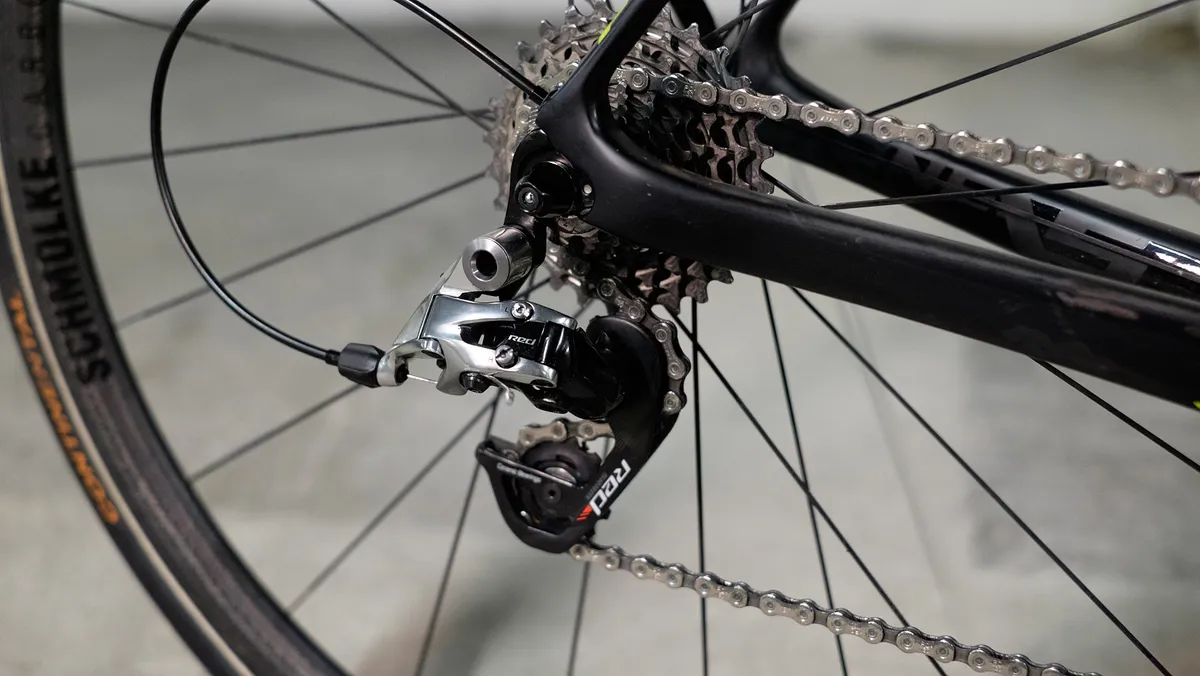
SRAM Force is already fairly light for a second tier groupset, however in order to save every last gram I upgraded to SRAM Red. Most of the weight saving comes from the one-piece cassette, which is around 100g lighter than the Force model.
Deda’s Superleggera bars saved around 30g and although this was a small amount they felt much stiffer, meaning it was an upgrade worth making. The bar tape was also removed as it’s not needed when you’re flying uphill on the hoods.

I’ve been a big fan of Shimano pedals for years, so changing to a different system felt like a big ask, however Time’s flagship Expresso 15 pedal saved a good 100g compared to my Shimano Dura Ace pedals.
It took a while to get used to clipping in to a different system, but once up and pedalling, I couldn’t tell the difference.

Finally, I ditched the regular double chainrings and converted to a 1x drivetrain. This obviously saves a good chunk of weight, however it’s also useful for correct gearing. UK hill climb efforts are relatively short, with high power numbers, so a regular 36-39t inner chaniring is often too small, therefore I decided to run a 40t, but many riders run bigger. I also chose a narrow-wide chainring to provide some peace of mind against dropping the chain on a miss-shift.
All these mods combined to give the bike a final weight of 5.3kg, well under the 5.5kg target. There are lighter bikes out there, however I feel they often compromise on stiffness and performance. With the SL, I felt I had the right balance of weight weenie(ism) and durability/reliability.
The season
The UK hill climb season is a brutal proving ground for any bike
The hill climb season runs from September to October and I used the SL in its final spec for the last three weeks of the season. This was when my target events took place, culminating in the National Championships on the last weekend in October.
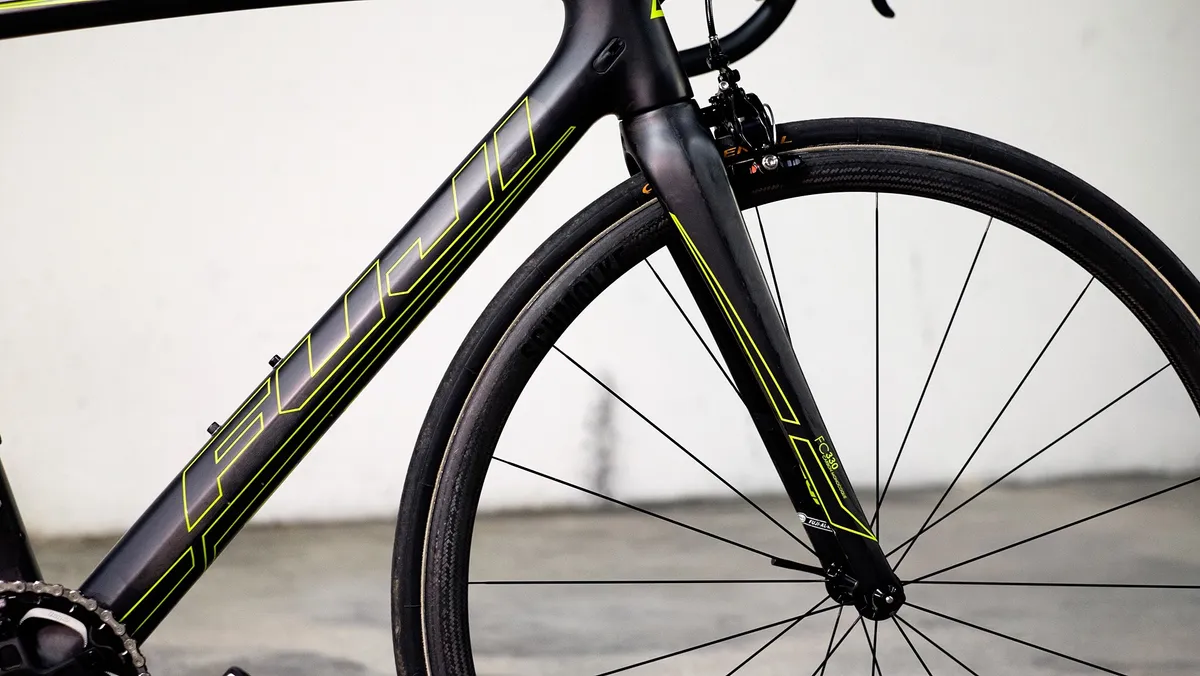
I’ve already spoken about how stiff the frame is, even for a dedicated climbing bike, but its true strength for me was in its unfussy nature.
By this I mean, standard brakes, standard spacing, simple bottom bracket and no funny shaped tubes. It was a workhorse of a bike and kept coming back for more during all of my training and racing. If it didn’t have to go back to Fuji, I could see myself riding this frameset for many years to come.
The components I sourced and mods made were a great match to the SL. Once again I had tried to source components of an unfussy nature that wouldn’t cause me stress during race day.
The wheels in particular impressed, I never managed to make the tyre buzz the rear stays and the hubs ran insanely smooth. It’s hard to quantify if these observations translate into real world performance, but they certainly felt quicker when compared to my training wheels. Being tubular means they wouldn’t be a ‘day in day out’ training wheel, but if you’re a keen racer or Sportive rider, the TLO 30s are well worth a closer look.
I had some slight issues with the shifting on the SRAM Red gears; shifting up just didn’t feel quick enough. Often this is because the cable loop near the rear mech is too small and this proved to be the case, with a larger loop improving the shifting no end. It’s a simple hack but worth knowing if you’re having trouble with your SRAM gears.
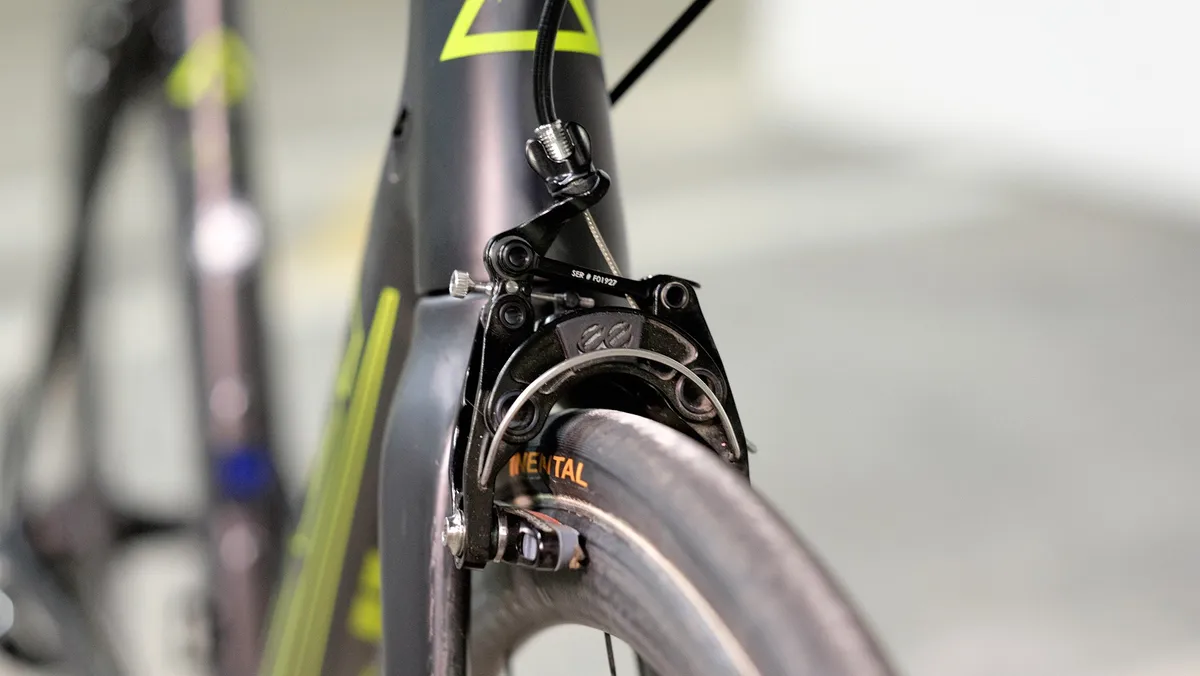
The Cane Creek EE brakes were mentioned in a previous long-term column and they have continued to impress. They’re not quite as powerful and the strongest caliper brakes, e.g. Dura-Ace, but they’re almost half the weight, easy to adjust, and have coped well with the daily grind of commuting and training.
The National Champs
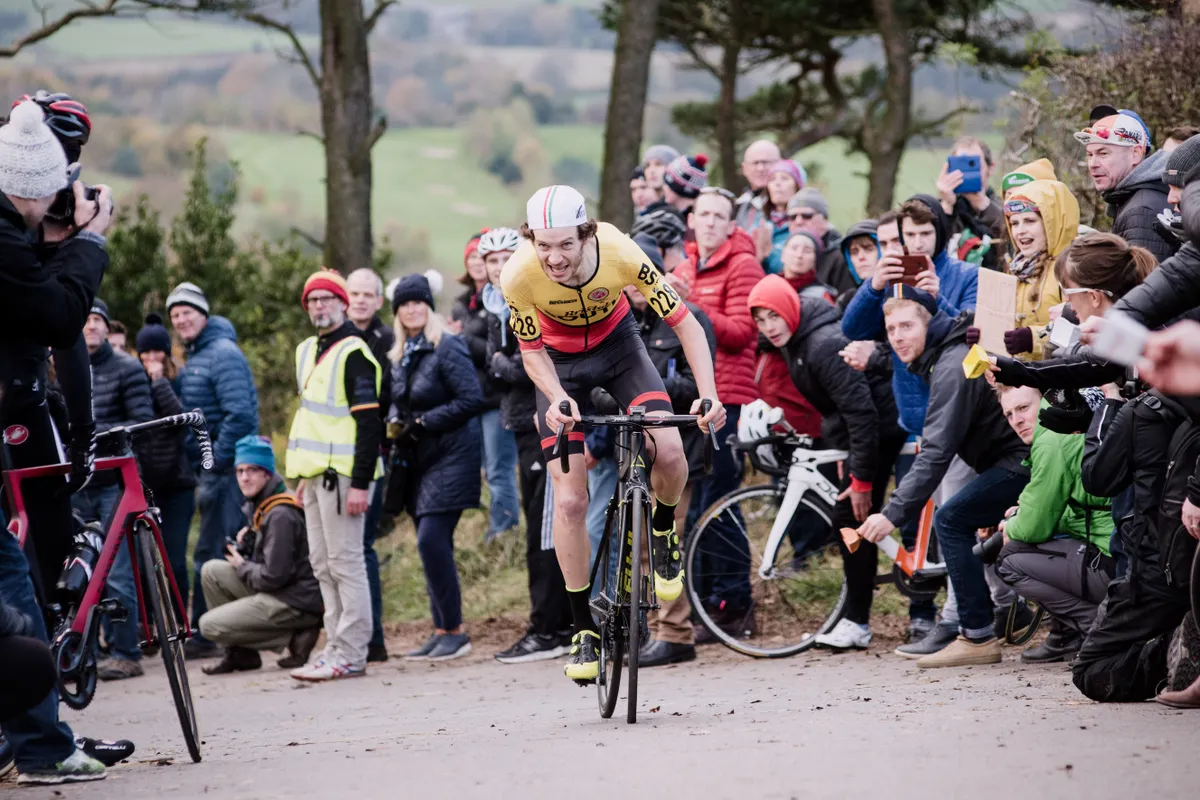
The National Championships took place at Headley On The Hill in Northumberland. The gradient wasn’t too savage, but there were plenty of ramps, meaning gear shifting and pacing would be important. With the winners looking to finish around the four minute mark, I’d be aiming for about 4.20 and hopefully a finish inside the top 20.
As the days counted down to the National Championships, I began to feel a little tense and having won my club's (Bristol South) hill climb the weekend before I knew I was riding well. All I had to do was ride around the power I’m capable of for the first three minutes, then open up the taps for the last minute and send myself into face numbing lactate oblivion.
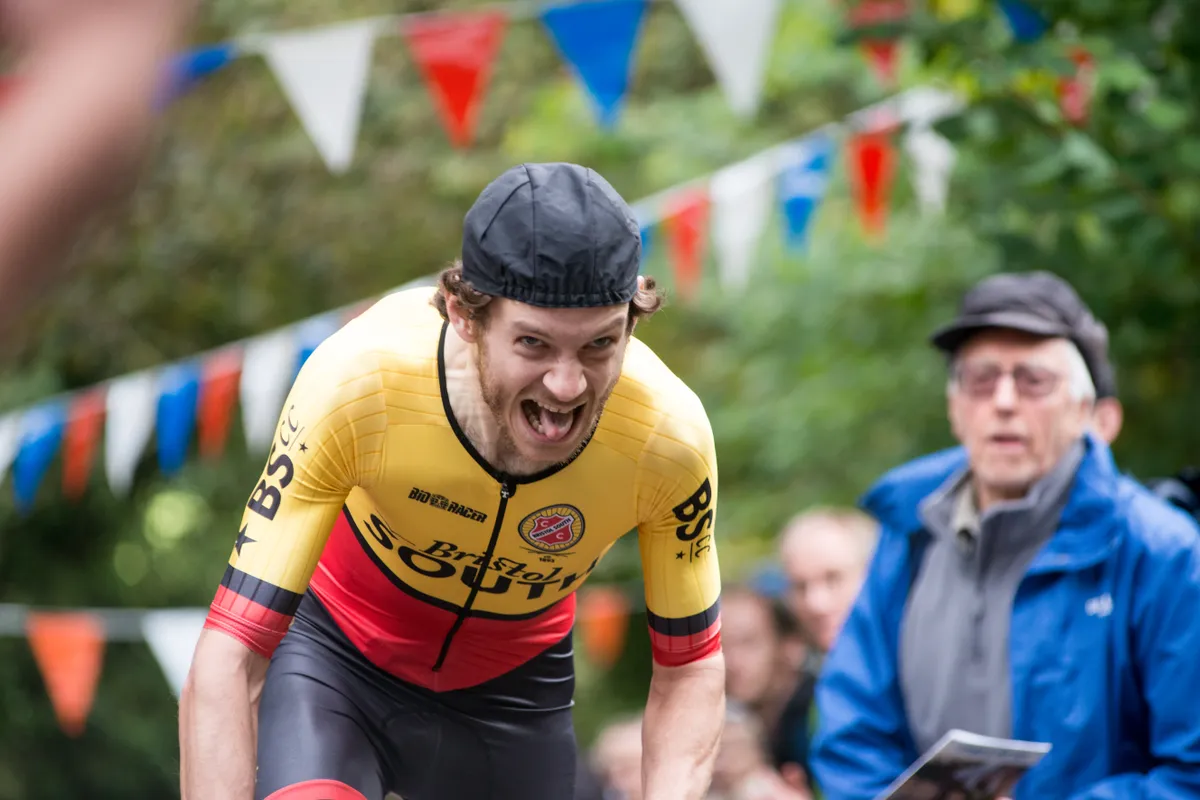
On the day I stopped the clock around 4.17, which was good enough for 17th place in the senior male category. For the numbers geeks, my average power was 468 watts and I weighed 62kg. I was incredibly happy with my performance and results, but to give you an idea of what it takes to win the nationals Dan Evans finished in just under four minutes and averaged around 500 watts. I think he’s around the same weight as me, so you need to be looking at eight watts per kilo to win. That’s incredibly strong for what’s essentially an amateur event and shows how quick/dedicated the top riders are.

Now the season has finished I’ve been spending my time eating chocolate and cakes, while partaking in steady rides; it’s been bloody excellent! With winter training about to commence, my Fuji will now be transforming from dedicated hill climb bike to winter hack, keep your eyes peeled to see how I get on.
Original story runs below — published 20 September 2017

With the first hill climb races starting soon I’ve been doing lots of training and agonising over/sourcing featherweight components.
Scary light stem
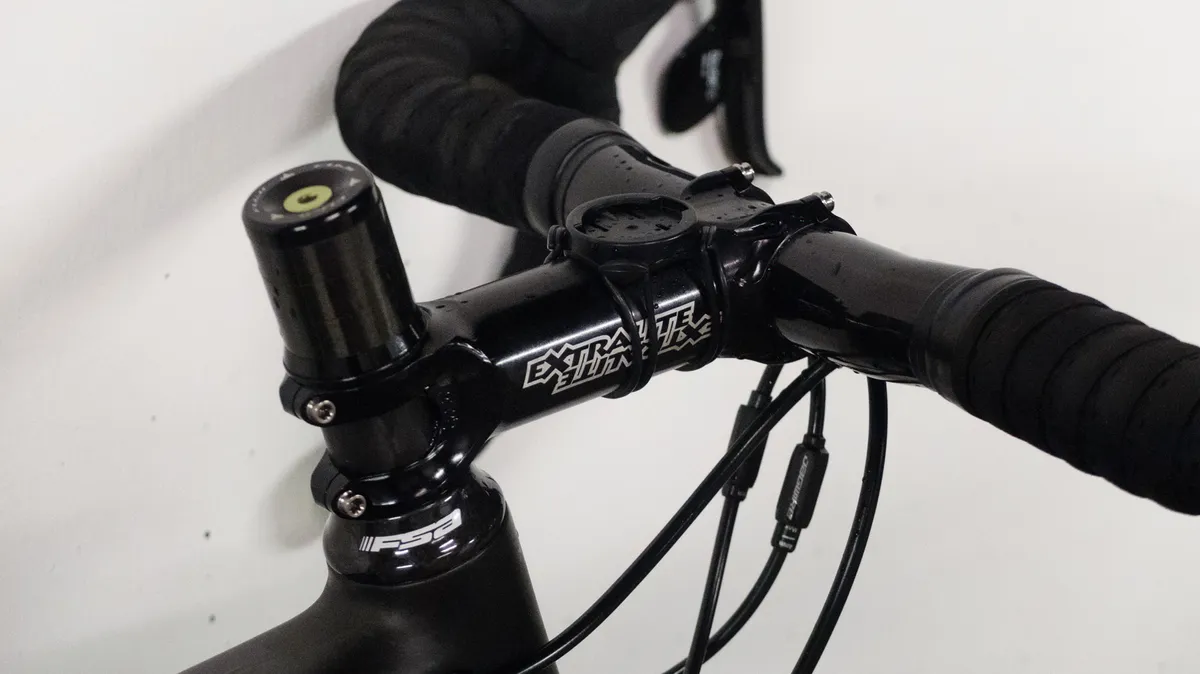
First to arrive was the Extralite Hyper stem. The 100mm stem that came on the Fuji felt a little short for my gangly arms, so I opted for a longer 120mm length and -12 degree drop model. This has lowered and stretched my position out without having any effect on my power output.
For a 120mm stem it’s crazy light at 88g, and while it may not be a stiff as some heavier stems, the flex is only minor.
Extralite even go as far as to say you can use this stem for enduro riding, however I definitely wouldn’t recommend that — it just feels too svelte for such big hits.

The bolts are pretty scary too — being T20 sized and having a maximum torque value of 3.5mn.
That seems pretty low, although I’ve applied loads of carbon paste, and as of yet, there’s been no slippages.
It’s also worth mentioning the price; €169 isn’t cheap, but when you compare it to stems of equal weight (ax-lightness/MCFK/Parlee etc), it’s about half the price, representing decent value for money in the financially skewed world of weight weenie-ism.
eeBrakes
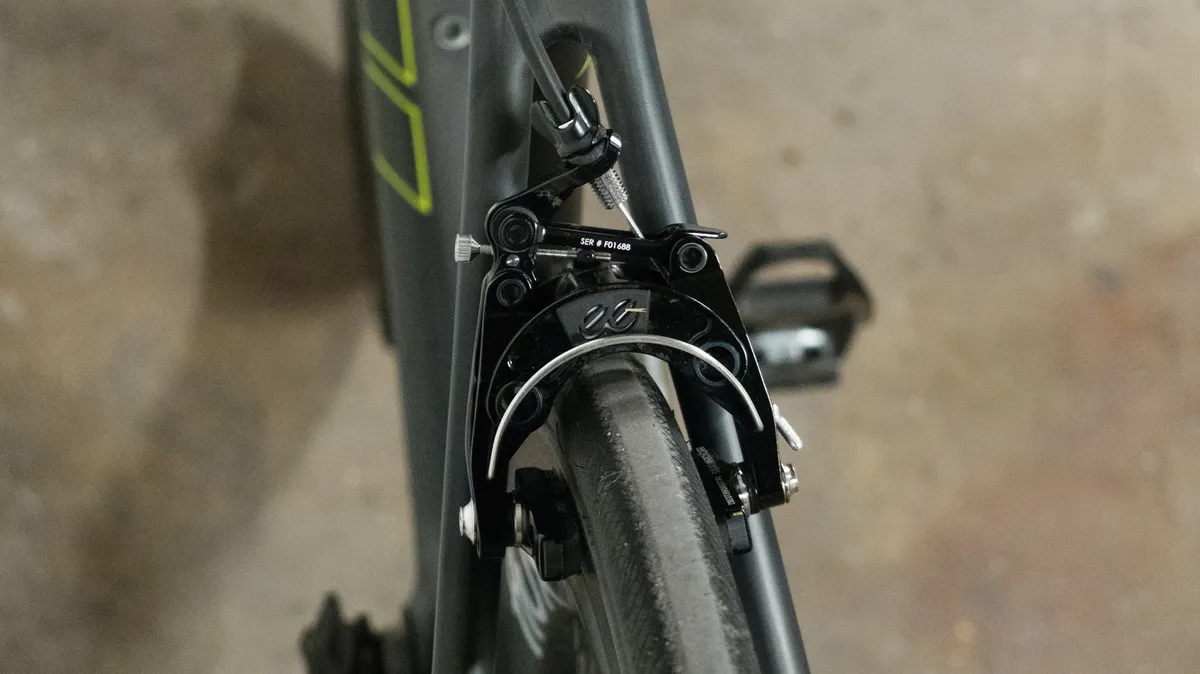
Next up Cycleworks eeBrakes from Cane Creek.
These beautiful calliper brakes have only just been fitted and so far they’ve impressed.
Obviously they’re incredibly light, saving around 100g compared to the stock SRAM force brakes, while also having plenty of power and modulation.
Are they better than Dura-Ace or any other top tier calliper brake? At the moment it’s hard to say — I’ll need more time in various conditions to make a true verdict, so watch this space.

At the moment I’m using some Flux wheels, which my colleague Jack Luke has already reviewed.
They scored highly, and whilst they’re not the lightest, they’re strong and plenty stiff — no matter how close in I dial the pads, I still haven’t managed to make them rub on the brakes during sprint intervals.
They also make that amazing humming sound when you’re tearing along the flats, however I’ll be changing to something much lighter when the races start.
Lightweight perch

Finally I’ve added the MCFK saddle and seat post from my 2016 fixed geared hill climb bike.
The bare carbon saddle isn’t as plush as the stock model that came with the bike, but hill climbing could never be considered a comfortable experience full stop. So, for me, it’s a price worth paying.
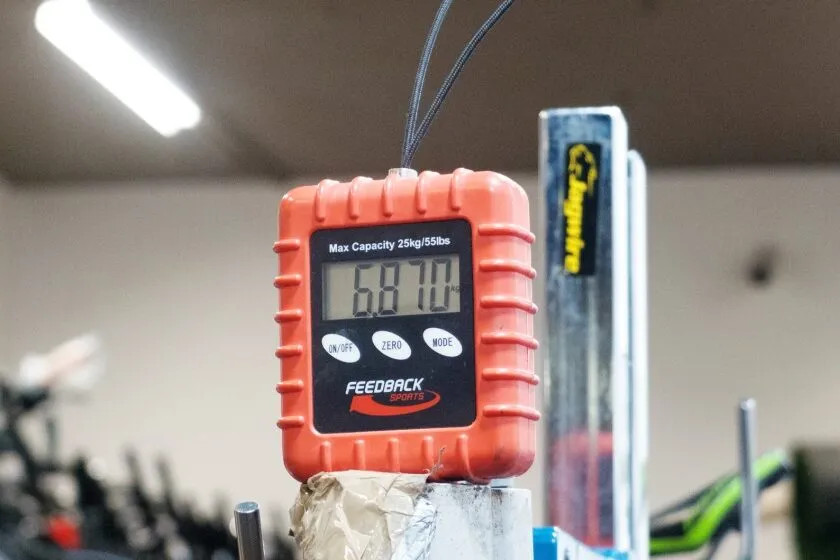
All these parts have added up to a 415g weight saving, bringing the overall build down to 6.87kg.
There’s still quite a way to go to reach that magical sub 5.5kg number. However, at the time of writing some big ticket items (wheels and groupset) have just arrived in the office, which should hopefully get me much closer to weight weenie nirvana.
Oh, and I must remember to chop that steerer tube down before anyone comments.
I plan to release my next update in October, by which time I’ll be well into the hill climb season, and should have a good idea how the bike is performing. The steepest climbs also take place around then, meaning I’ll also be converting the bike to a one-by drivetrain. Keep your eyes peeled to see how I get on.
Stats for August
- Kilometers ridden — 1,294km
- Hours ridden – 52hrs 16min
- Metres climbed – 20,137m
- TSS — 3,537
- Peak power — 1min. 666w, 5 min. 455w, 20 min.326w
- Body weight — 64kg
- Levels of hunger — moderate
- Severity of ‘hill climber cough’ — no coughing as of yet
Original post: July 6th, 2017
I have a well-documented and masochistic love affair with hill-climbing, so the first question I had when choosing a long-term bike was, ‘Is it light’? Like many riders, my second consideration was, ‘Is it relatively affordable?’
Coming in at 6.68kg and costing €3,499 the Fuji SL 1.5 ticked those first two boxes. Fuji gets an extra tick as my size large actually weighed 6.68kg out of the box and onto the BikeRadar scales – an annoyingly rare occurrence, given that manufacturers often only quote the weight of their smallest bike/frame. Further kudos came in the shape of the glowing review that my Aussie colleague Colin Levitch had bestowed on the 2016 SL 1.5.
This review is part of our new long-term test format on BikeRadar, where staffers like me will be introducing the bikes we're spending time on over the next few months. We’ve already seen Jack's Bianchi Methanol, Oli’s Norco Search Alloy and had a brief look at Ed’s Kona Operator DL. Be sure to keep checking back here for regular updates.
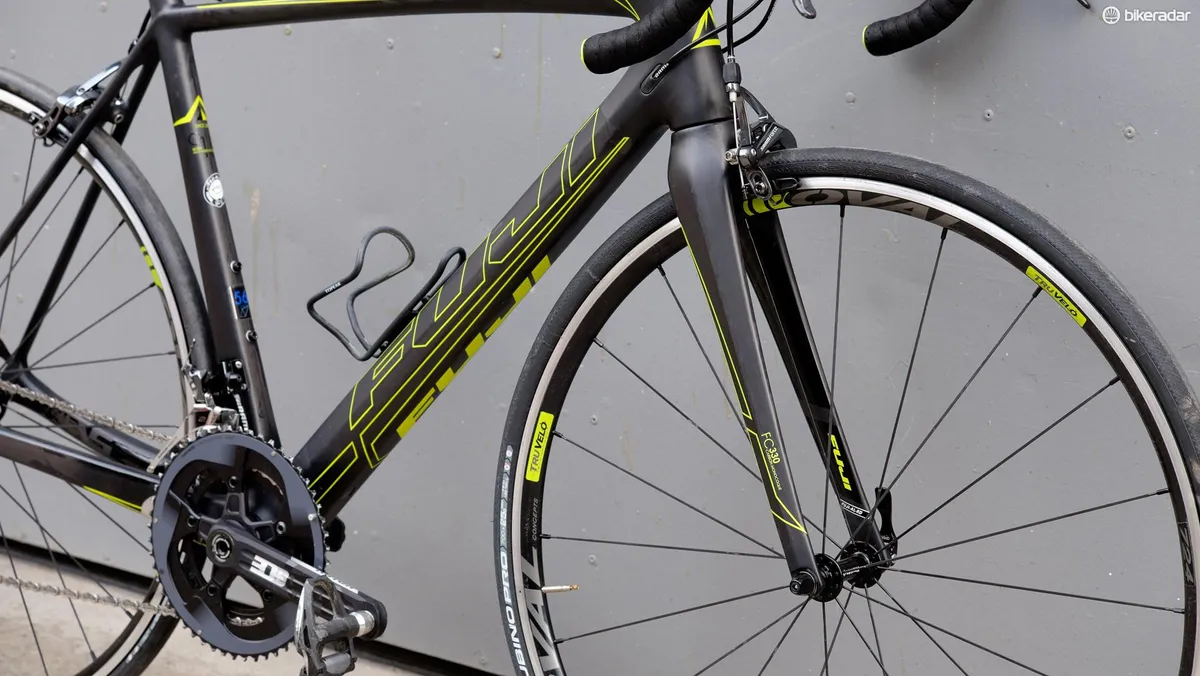
Obviously just having a light bike won’t get you very far if it can’t handle the power being put through the pedals. Along with feathery weight the Fuji needed to be, in universal bike industry parlance, stiff and responsive.Thankfully after putting in 400-ish miles I can safely say the SL 1.5 has the performance to match said marketing buzzwords.
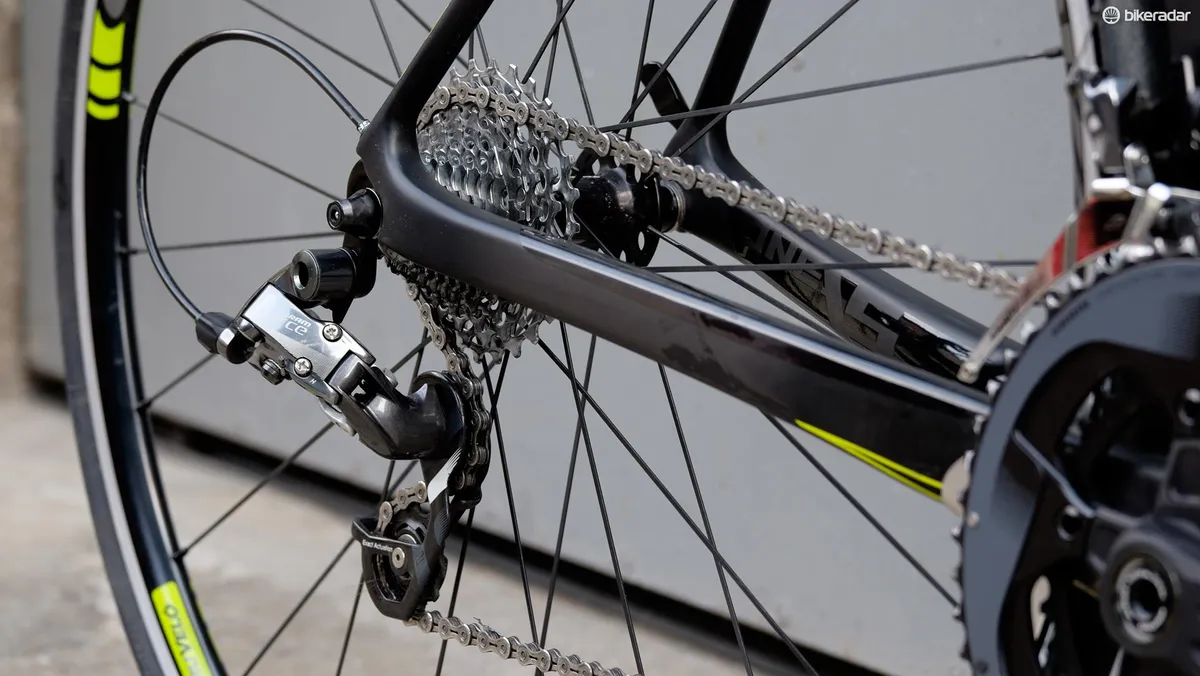
In short, it's as stiff and responsive as my 64kg frame will ever need. No matter how hard I’ve tried I haven’t been able to make the 25c tyres buzz those chunky chainstays. Being an out and out race bike the handling is obviously going to be sharp – and it’s hardly the comfiest bike I’ve ridden. That said, I managed a five-and-a-half-hour ride with no soreness or undercarriage issues.
Making it my own
I’ve already made one change, which was to install a Rotor INpower power meter. It’s the single-sided version, so may not quite have the accuracy of a double-sided or crank based power measuring system, but for me it’s accurate enough and, once again, is very light.
The next change will definitely be swapping the brakes from ‘euro’- to UK-style. I thought I could handle having the front brake on the left, but a few close calls with traffic suggest otherwise.
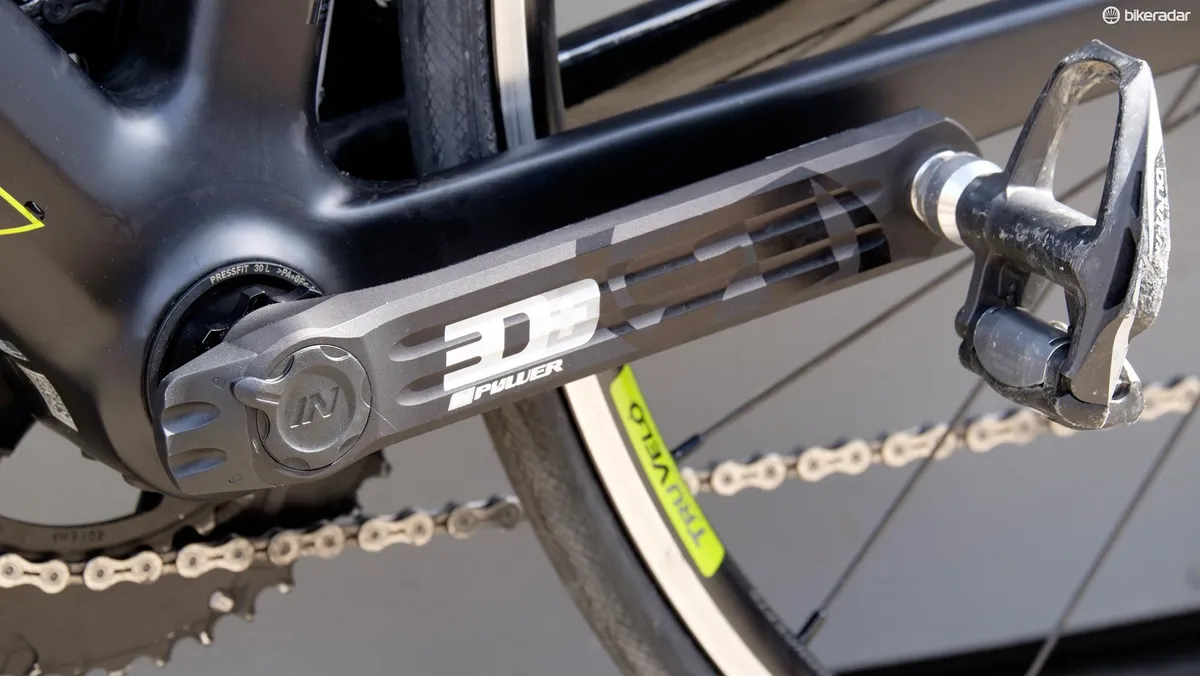
With a metal bottle cage, power meter and Shimano Dura-Ace pedals, the bike currently stands at 7kg dead. For the hill-climb season in October I’m aiming to get it down to 5.5kg and under, meaning there’s still a long way to go. This will most probably involve some sawing/removing/acquiring of some fancy parts – and you will of course be able to follow the Fuji’s ascent into weight weenie heaven on these pages.
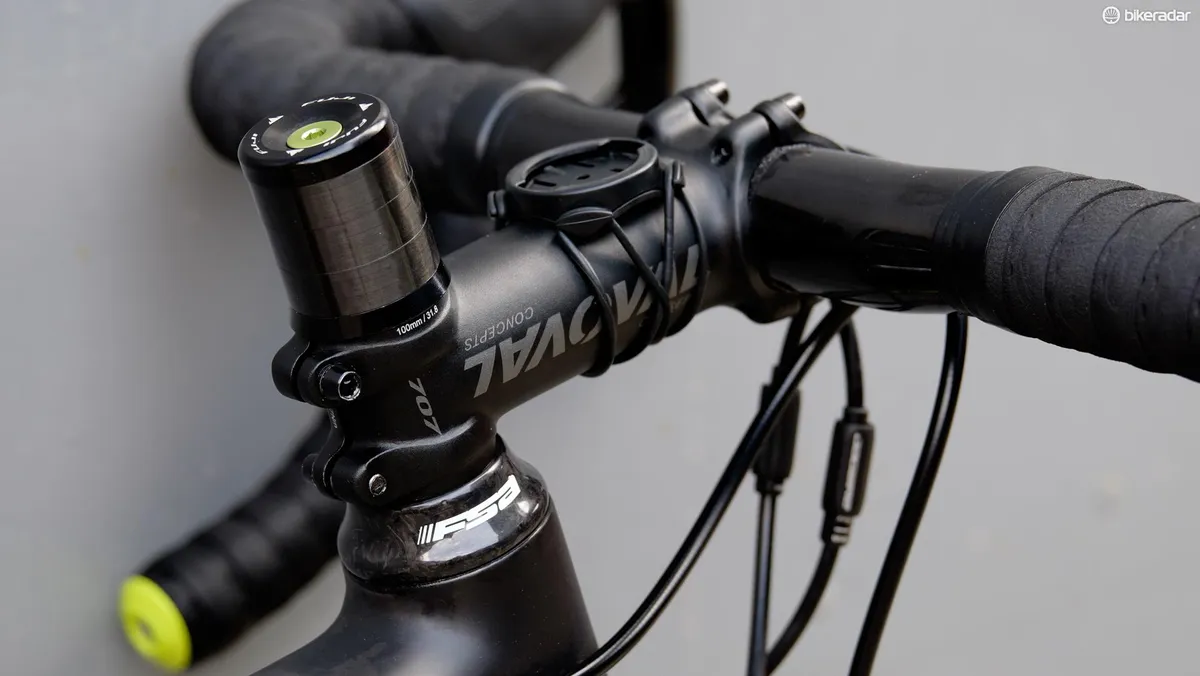
Mileage this month
Around 150
Costs this month
Nil – just the Rotor power meter upgrade, which was stolen from one of my old bikes.
Fuji SL 1.5 specification
- Frame: C15 ultra high-modulus carbon w/ High Compaction molding size L (56cm)
- Fork: FC-330 carbon monocoque w/ tapered carbon steerer & carbon dropout
- Crankset: Quarq Prime Carbon, 52/36T, power-ready
- Bottom bracket: SRAM, press fit BB30
- Front derailleur: SRAM Force 22, braze-on mount
- Rear derailleur: SRAM Force 22, 11-speed
- Shifters: SRAM Force 22, 11-speed
- Brakes: SRAM Force
- Wheelset: Oval Concepts 724, 700c 20/27H super-light aluminum rims
- Tyres: Vittoria Rubino Pro, 700 x 25cc, 150 tpi, folding
- Handlebar: Oval Concepts 910 Ergo, carbon, 31.8mm clamp, 133mm drop, 4° sweep
- Handlebar tape: Oval Concepts 300 bar tape, suede
- Headset: FSA, 1 1/8" upper - 1 1/2" lower, integrated w/ carbon top cover
- Stem: Oval Concepts 707, 3D-forged 6061 stem body, +/-7°
- Seatpost: Oval Concepts 950, carbon & alloy, 27.2mm diameter
- Saddle: Oval Concepts 734 with pressure relief zone, cromo rail
- Weight (actual): 6.68kg/14.72lbs (without pedals)



